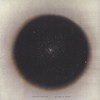[DMZ]
Dance music feeds off forward movement. You see it one way in galloping drum patterns and advancing tempos, another in the race to expand genres and forge altogether new aesthetics as quickly as possible. It’s why many of us fell in love with this music in the first place, even if we weren’t spending every free weekend moment in a club or at a party: this music, more than a lot of other contemporary musics, is going somewhere, and keeping up leaves you with one hell of a runner’s high.
Following dubstep feels a bit like running the steeplechase at world-record pace with no training. And like The Canterbury Tales, dubstep has been as much about the journey as where we’ve ended up. It’s as if sub-bass, the scene’s now-mostly-optional primary trait and talking point, was merely the first vessel a particularly wild strain of musical energy got hold of. Since Horsepower Productions and El-B first summoned this demon nearly a decade go, its grubby hands have grabbed everything from house, techno, and drum & bass to Britney Spears, not only expanding its own definition but leaving thumbprints on the genres it took from. I often think about traveling back in time to Croydon’s Big Apple Records, where clerks like Skream peddled dubstep’s earliest transmissions, with a crate full of Ramadanman dubs just to see where they’d get filed (not to mention the look on everyone’s faces when they came on over the system).
Typically, a conservative approach to dubstep in the face of all this style-swapping and Internet-heated genre growth has resulted in rather brutish music, all garishly raved-up bass lines wobbling lunch money out of your pockets, played by DJs inevitably wearing this t-shirt. Mala, however, has kept dubstep true to its roots without being a meathead about it, and it’s made him into a kind of Baal Shem Tov for devout bassheads worldwide. He and the DJs and producers in his orbit have continually refined dubstep — studied it, labored over it, lived it, all the while worshipping it — rather than let it evolve and integrate, creating a near-pure strain of the stuff (despite the slow-mo virus recently penetrating its cell membrane). Listening to a Deep Medi or DMZ record feels a bit like reading dubstep in Aramaic — a rewarding experience (and likely a scholarly one, considering how much they fetch on collectors’ markets), even if half the fun of dubstep circa 2010 is how corrupted the accepted translation has become.
Mala, producing sans Coki as Digital Mystikz, has cast what could be the purest dubstep of the last few years — if not the purest dubstep imaginable at this point — in the form of Return II Space. Like another seminal dubstep full-length, Mala attempts to downplay its album-ness, yielding only six relatively brief tracks over three 12″s that each bear their own catalog number. Regardless, it’s epic, a result of ass-kicklingly astounding production. Mala begins his set on a rainy day with “Unexpected,” the kind of fast-paced yet sensitive roller that jump-started Martyn’s career some years back. It’s a perfect setup for “Pop Pop Epic,” which manages aggression without becoming “aggro.” It finds this sweet spot not through grinding or growling but through repetition: as much as its bass line — conjuring a highly unlikely New Order/Goth-Trad collabo — owes its power to sound, it overpowers you through hypnosis, like so much headfuck techno.
“Mountain Dread March,” the set’s only 33-rpm side, finds Mala at his most wandering, contemplative, and nearly melody-devoid. His drums here have a rippingly raw quality I’d usually associate with something Steve Albini produced, yet the track has a sensitive touch that’s purely Deep Medi. “Eyez,” with its skyscraper-sized, serrated bass line, sounds like it was produced with re-appropriated logging tools, though Mala brilliantly dresses your wounds in sweetly ambient synths. The spacey and contemplative “Livin’ Different” bridges the gap between the rest of the set and “Return II Space,” its magnificent finale. The track combines the moods of the previous five cuts for something resembling the ultimate Mala brainmelt. Heavy doesn’t do the thing justice: you come out of it feeling like a tenderized piece of meat. But it also fails to convey the breadth of what’s happening inside, from tiny Jamaican melodies to stuttering drums and photon blasts.
At the risk of sounding cute, I must note that if you’re only planning to buy one physical record this year, Return II Space should be the one. DMZ have pulled out all the MP3-killing stops here: the three slabs of wax feature the Platonic ideal of mastering (never too loud, never ragged in the highs) and are noticeably heavier than your typical dance 12″. And they’re housed in a subdued yet luxurious gatefold. (A few lucky souls even snagged picture discs.) While the tracks themselves are impeccable, I just can’t imagine listening to this set on my iPod: the textures are too subtle, the arrangements are too expansive, and the booms are too earth-shattering for compression. What is dubstep but the last great genre for vinyl? And what is Return II Space but dubstep’s first timeless release in quite awhile, a set you won’t want to lose to a hard drive crash? Let everyone else in this game make music for 2010. Mala’s thrown down for the great beyond.















Mala is a king.
Purist Dub Step. I fucking love this shit.
Check Peverelist’s RA podcast for the same kind of vibes.
The dude’s making cultural artifacts, not banging out mp3s.